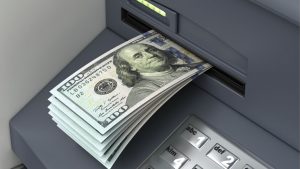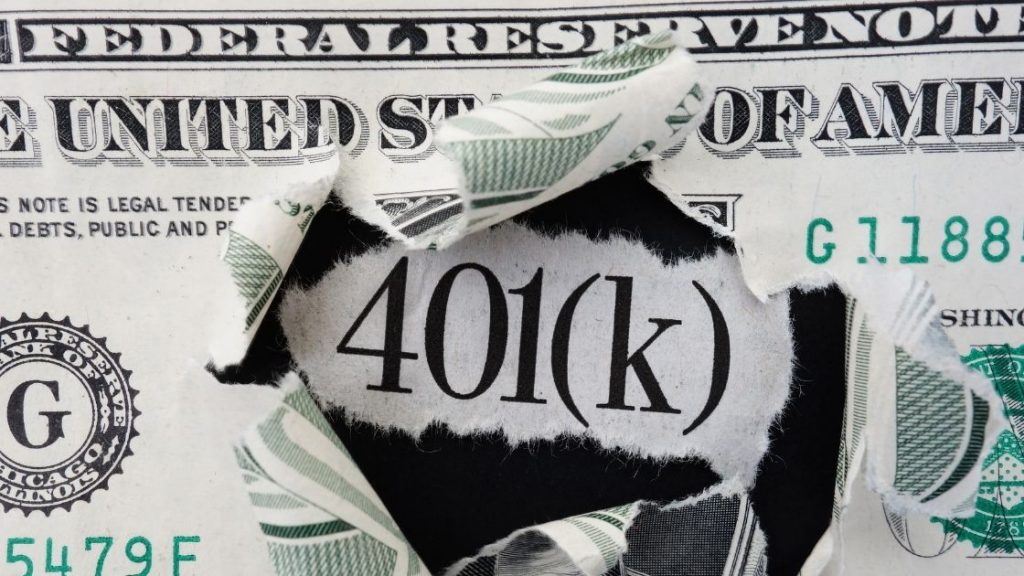Did you know that you could buy an ATM and make money each time someone makes a withdrawal from that ATM? The ATM business can be very lucrative and if structured correctly, can provide the owner with a steady stream of mostly passive income.
Don’t have any money to start an ATM business? We got you covered.
This article covers 9 ways to start an ATM business with no money.
Here’s a preview of what we’ll cover:
- Buy ATMs with Credit Card “Teaser” Offers
- Borrow Money Through Peer-To-Peer Lending
- Get Funding from Banks and Financing Companies
- Use HELOC
- Obtain Federal, State or Corporate Grants
- Withdraw Roth IRA Contributions
- Borrow From Your 401(k)
- Borrow Using Margin Account
- Enter Into a Partnership
Before we dive into this, let’s tackle a few introductory questions around the ATM business like how much it costs to start an ATM business, how much money you can make with an ATM business, and whether it’s a good investment.
Already know the introductory stuff and want to skip ahead to the 9 strategies? Just click here.
This post may contain affiliate links. If you click on a link and complete a transaction, I may make a small commission at no extra cost to you.
The information contained in this post is for informational purposes only. It is not a recommendation to buy or invest, and it is not financial, investment, legal, or tax advice. You should seek the advice of a qualified professional before making any investment or other decisions relating to the topics covered by this article.
How Much Does it Cost to Start an ATM Business?
The average new ATM costs between $2,300 and $3,000. A used ATM will generally cost between $1,200 and $1,800.
Source: Lieberman Companies
But you will also need some money to fill the ATM machine when you start. When you add it all up, you will likely need around $5,000 to start your ATM business.
How Much Money Can You Make Owning an ATM Machine?
With an average ATM surcharge of approximately $3 per transaction and an average of 180 transactions per month, your monthly gross revenue can be $540 for each machine. That equals $6,480 per year.
Of course, these numbers are based on averages and your actual results may differ, but these numbers should give you a sense of what is possible.
And this is all for one machine. You can imagine the possibilities as you buy more.
Is Owning an ATM a Good Investment?
Owning an ATM can be a good investment because the costs of buying an ATM are low compared to the potential returns that an ATM can generate. Assuming an average new ATM costs $3,000 and you generate average gross revenue of $540 per month, the ROI can be upwards of 100% per year.
Here’s the math:
As we discussed, the average new ATM costs between $2,300 and $3,000.
The average gross revenue can be $540 per month, which equals $6,480 per year. So if we paid $3,000 for the machine (which is on the high end) and made $6,480 in a year, the annual ROI is over 200%.
Of course, we are ignoring the costs of doing business, such as revenue splits between the ATM owner and the location owner, costs of maintaining the machines, etc., but even if we split the gross revenue in half (which is very conservative, given that revenue splits are usually much less than 50%), the potential ROI stands at over 100% per year.
That’s just eye-popping.
This type of ROI is supported by information from companies in the ATM industry. According to Liebermann Companies, you may be able to make your money back on an ATM within 6 months of buying, which equals a 200% ROI.
Ok – now that we have the introductory stuff out of the way, let’s dive into the 9 strategies you can use to start your ATM business with no money.

1. Buy ATMs with Credit Card “Teaser” Offers
One of the most accessible strategies to buying your first ATM is placing it on a credit card with a no interest or low interest teaser rate. These are credit card offers that allow you to borrow at a very low interest rate (between 0% to 5%) for a certain period of time (usually longer than 6 months and often over a year). If the entire balance is not repaid in full by the end of the teaser period, the rate skyrockets.
These credit card offers are all over the place and if you have decent credit and income, it should not be hard for you to qualify.
You want to find an offer that gives you a zero percent (or near zero percent) interest rate and keeps that rate in place for at least a year (longer is better).
As you may recall, it is possible to make enough in the first 6 months of operation to pay back the full purchase price of the ATM, so it is not crazy to think that you can eliminate the credit card debt within the first year or so.
So that takes care of the ATM purchase. What about the cash you need to load your ATM?
The solution is simple.
Once you have your ATM and your location locked up, you can find a company that will load your machines with cash. Yes, they exist – a simple google search of “companies that will load cash into ATMs” provides a laundry list of companies that offer this service.
These companies will fill your machines with cash when needed and this can make your ATM business almost completely passive.
You will take a hit on your profitability because you will need to pay the cash loading company for their services, but it may be worth it to run a hassle-free business (plus you won’t have to worry about coming up with cash to load your machines all of the time).
2. Borrow Money Through Peer-To-Peer Lending
If you don’t want to run the risk of a credit card teaser rate expiring and leaving you with a 20% (or higher) interest rate on your debt, you can borrow the money to buy your ATM using peer to peer lending.
Peer to peer lending connects borrowers directly with individual investors who are looking to finance loans and earn a return on their investment. This happens via online platforms offered by companies like Prosper, Lending Club, Upstart, Peerform, etc.
The interest rate you will have to pay may depend on a variety of factors, including your income, credit score, and other risk factors.
Here is a good comparison chart of various peer to peer lending platforms.
3. Get Funding From Banks and Financing Companies

No list of financing options would be complete without the good old brick and mortar bank. Of course, these days, online banks and finance companies are also huge in the small business financing space.
If you prefer to go old school, you can stop by your local community bank, credit union, or large money center bank (Citi, Wells, BofA, etc.) and apply for a loan.
If you prefer to operate online, you may want to check out Fundera. They are affiliated with Nerdwallet and offer small business financing options from a variety of potential lenders. You fill out one application and they provide you with a list of lenders suited for your situation.
4. Use HELOC
If you are among the fortunate folks out there that own a home and have some equity in that home, you can apply for a Home Equity Line of Credit (HELOC) and pull some of that equity out in the form of cash. Because HELOCs are secured by your home, they tend to have lower interest rates than other lending options.
That being said, you could lose your home if you default on the loan.
So consider carefully whether you want to take that risk. And if you choose to do so, pay off the loan as soon as you can.
5. Obtain Federal, State and Corporate Grants
Ok, let’s shift gears and move away from the borrowing strategies. You may be able to get money to start your ATM business by applying for federal, state and corporate grants.
If you are looking for federal grants, start with grants.gov. This is a government site that offers a huge database of various federal grants available for small businesses.
Of course, you can also search for state and local grants as well as corporate grants. The US Chamber of Commerce has a great resource that will point you toward a number of great grant options you can explore.
6. Withdraw Roth IRA Contributions
If you have money in a Roth IRA, you may not realize that the “contributions” portion of your IRA is not locked up. You can withdraw it tax-free and penalty-free at any time and for any purpose.
Now, you have to make sure you have a Roth IRA and not a traditional IRA because the rules are very different for traditional IRAs. And you have to make sure you only withdraw up to the amount of contributions you made (not any gains or earnings you made on those contributions).
Screwing up here can mean bad tax consequences for you. To be on the safe side, you should consult with your tax advisor before making the withdrawal.
7. Borrow From Your 401(k)

Let’s stay with the retirement funds theme for a bit. You can also take out a loan against balances in your 401(k) to fund your ATM business.
The cool aspect of this approach is that you are borrowing money from yourself, so you are paying yourself back (with interest).
Not all employers allow you to do this and there are limitations on how much you can borrow (the lesser of 50% of your assets in the 401(k) or $50,000). Source: IRS.
A bit of a warning here: Don’t use this option if you think you might lose your job soon or you plan on jumping ship – you will need to pay back the entire loan balance within 60 days if you leave your job.
If you don’t repay within that 60 days, the withdrawn amount will be subject to taxes and penalties if you are under 59.5 years old.
Obviously, borrowing from your 401(k) (or your Roth IRA for that matter) may not be ideal from a retirement planning viewpoint because that money should be dedicated for retirement. But if you are aware of the risks and feel that investing in your ATM business is a better path toward securing your retirement, this is an option you may want to explore.
Update: If you have been affected by the pandemic, the CARES Act allows loans up to $100,000 and has relaxed other requirements for 401k loans (like allowing you up to 6 years to repay the loan). Source: CNBC
8. Borrow Using Margin Account
Do you have a brokerage account? If yes, you may be able to convert that account into a “margin account,” and use that margin (which is basically a loan from the broker to you) to fund your ATM business.
There are some brokers that offer really low-interest rates for margin accounts right now, so it could be an interesting option.
But there are significant risks associated with this strategy. Namely, if the securities that are backing up the margin loan decline meaningfully, you may get a “margin call.” That is really bad and it could cause you to sell your securities at a depressed price.
9. Enter Into a Partnership
If the other options don’t work for you, try investing in the ATM business with a partner. There are lots of people out there looking for a solid return on their investment.
If you have done your homework and have a compelling business plan, you may be able to convince someone who has some disposable funds to invest that money into your ATM business.
These arrangements can be structured in many ways.
It can be a simple loan, which would be repaid based on terms you and the partner mutually agree on. Or it can be a profit-sharing arrangement where the partner gets a piece of the profits of the company (both ongoing cash flow and net profit when the business is sold).
Of course, I want to shoot straight here. There are countless stories of partnerships gone bad and relationships irreparably harmed, so keep that risk in mind when exploring this option.
Conclusion
So there you have it – 9 ways to start your ATM business with no money. Hopefully one of them gives you a path to launch your own money-making ATM business.
Related Reading
Want to learn more about how to start your ATM business? I have written a step-by-step guide to starting an ATM business that you may find helpful.
One of my favorite articles on passive income is my piece on businesses that run themselves. In that article, I cover some great businesses that can generate attractive levels of return without a lot of day to day involvement by the owner (obviously, ATMs are included in the list, but there are many more). Check it out here.

